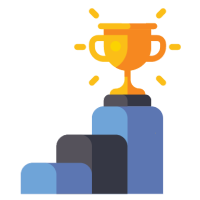18
AprHow to Become a Programmer: A Step-By-Step Guide
How to Become a Programmer in 2023: A Step-By-Step Guide - An Overview
In the dynamic world of technology, becoming a programmer is an enticing and rewarding journey. The demand for skilled programmers continues to rise, making it an excellent career choice.
Whether you're a complete beginner or looking to switch careers, this step-by-step guide will help you navigate the path to becoming a proficient programmer. You can take tour of our Career guidance article, that helps you a lot finding a job.
Who is a Programmer?
A programmer is a professional who writes, tests, and maintains the code that makes software applications and systems function. They play a crucial role in shaping the digital landscape, creating everything from mobile apps and websites to complex software solutions.
The need for workers with programming experience is presently quite high due to the rapid growth of technology. Since programmers are needed in software engineering, web development, application development, systems analytics, and data science, the position has grown in popularity.
Why Choose a Career in Programming?
Here are four reasons why you should think about becoming a programmer in 2025 if you're still not certain that's the right career path for you:
1. Many Careers Opportunities
In today's tech-driven world, the demand for skilled programmers is ever-growing. The range of industries requiring programming expertise ensures a wealth of career opportunities.
2. High Salary
Programming careers often come with competitive salaries. The demand for specialized skills in areas like artificial intelligence, machine learning, and cybersecurity further contributes to attractive compensation packages.
3. Work Flexibility
Programmers enjoy the flexibility to transition between different industries. The skills acquired in programming are applicable across diverse sectors, providing professionals with a dynamic and varied career path.
Many programming jobs offer the luxury of remote work, allowing programmers to enjoy flexibility in their work schedules and locations.
4. Freelancing Opportunities
Freelancing is a viable option for programmers. With the rise of gig economies, freelancers can take on projects, build a diverse portfolio, and enjoy the flexibility of managing their own work.
How to Become a Programmer: A Step-by-Step Guide
Now that you have an understanding of the benefits of being a programmer, here are five actions you may take to get started:
Step 1: Select a Programming Language/Niche
With applications in practically every industry, programming is a remarkably broad profession. Programmers are needed by businesses to create games, repair problems with systems, create applications, and carry out predictive analytics.
Since most companies have a stable technology set that the entire team works in, it may seem contradictory to specialize in just one language when the programming landscape is constantly changing. However, you should start with this.
These companies are looking for a programmer with extensive knowledge of this language. Master one language and only apply to jobs where it is specified as a requirement if you want to be hired. Only once you are proficient in your native tongue should you begin studying a second one.
Which Programming Language to Choose?
Python:
- A versatile and high-level programming language.
- Widely used for web development, data science, artificial intelligence, and automation.
- Known for its readability and ease of use.
- Take our Python course to learn the language from scratch.
Angular:
- A TypeScript-based open-source front-end web application framework.
- Developed and maintained by Google.
- Ideal for building dynamic, single-page web applications.
- Take our Angular course to learn the language from scratch.
React:
- A JavaScript library for building user interfaces.
- Developed and maintained by Facebook.
- Known for its component-based architecture and virtual DOM, enhancing application performance.
- Take our Introduction to React course to learn the language from scratch.
JavaScript:
- A widely used programming language for web development.
- Executes in the browser, allowing for dynamic and interactive web pages.
- Works alongside HTML and CSS to create modern and responsive user interfaces.
- Take our Introduction to JavaScript tutorial to learn the language from scratch.
Java:
- A widely used, object-oriented programming language.
- Known for its portability and platform independence.
- Commonly used in enterprise-level applications, mobile applications (Android), and web development.
- Take our Introduction to Java online course to learn the language from scratch.
Step 2: Education
Acquire a foundational education in programming through online courses, coding bootcamps, or traditional university degrees. Choose a learning path that aligns with your chosen programming language or niche.
Ten years ago, learning to code might have required paying a million dollars for a computer science degree, but today, there are an infinite number of online tools available for much less money.
Take an online course to master the fundamentals of programming before you begin. This covers the fundamental ideas of all programming languages, such as variables, functions, methods, operators, conditional expressions, and control flow.
Step 3: Coding Challenges
Engage in coding challenges on platforms like HackerRank, LeetCode, or CodeSignal to enhance problem-solving skills and practice writing efficient code. The majority of would-be programmers make the error of taking too many tutorials.
Their constant copying of other people's codes and frequent viewing of YouTube videos reduce their development as programmers. These platforms offer a range of challenging coding problems.
As you work through the tasks, they get harder and harder, but you can always refer to the solutions that other programmers have provided on the site if you get stuck.
Step 4: Projects
Build a portfolio of projects showcasing your skills. Include a variety of projects that demonstrate your ability to solve real-world problems. You can use code to tackle an end-to-end problem by starting a personal project. Your only restriction on what you may construct is your own imagination.
If you have no prior experience or formal training in the industry, this is a terrific method to show hiring managers your programming skills and enthusiasm. Make sure you start fresh with a unique project that shows uniqueness if you want to be recruited as a programmer.
You cannot stand out from the competition with simple projects like a calculator application or a number guessing game, which have been developed by thousands of would-be programmers in the past.
Step 5: Apply for Programming Jobs
1. Build a Portfolio Website
A short introduction: Provide a brief overview of your background, skills, and passion for programming.
Projects section: Highlight key projects with descriptions, technologies used, and outcomes.
Contact page: Include your professional email, LinkedIn profile, and any other relevant contact information.
2. Enhance your Social Media Presence
Optimize your LinkedIn profile, share your projects on GitHub, and actively participate in programming communities on platforms like Twitter and Stack Overflow.
3. Apply for Jobs:
Utilize job platforms such as LinkedIn, indeed, and Glassdoor to find suitable positions. Tailor your resume to emphasize your skills and experiences relevant to the job requirements.
Summary
In conclusion, the journey to becoming a programmer involves choosing the right language, acquiring education, practicing coding challenges, building a robust project portfolio, and effectively presenting yourself in the job market. By following this step-by-step guide, you'll be well on your way to a successful programming career in 2025.





